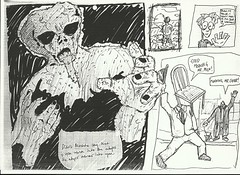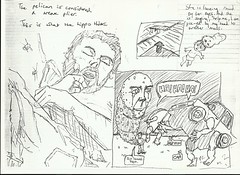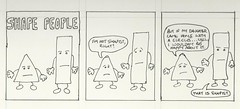Welcome to part two of my thesis autopsy, where I pick apart the first draft of my PhD and try to remember just exactly what it was I was trying to study when I began. As always, this is the blog and not the thesis itself so while there’s a lot of references in what follows its also likely to slip into a more conversational style. Let’s just jump straight in.
My thesis began with two broad questions: what could the development of the superhero tell us about posthumanism, and how did readers of superhero comics relate to the posthuman? In Part One of this thesis review I pointed out that answering those questions first required clarifying the epistemological and ontological assumptions underlying them. So it was that Part One introduced several concepts borrowed from Delueze and Guattari that served as the theoretical guide for undertaking this research project. In this part I want to re-introduce Deleuze and Guattari’s concept of the rhizome (touched on briefly in part one) and how it differs from traditional models of thought and culture.
These ideas will then be illustrated through a discussion of the filed of Comics Studies as rhizome, and also how many scholars approaching the superhero have relied on structuralist analyse (often accompanied by an ideological critique). Such approaches, whether positive or negative in their final reading of the ‘meaning’ of the superhero, are presented as arboreal or tree-like. I argue that such approaches can be characterised as Humanist. The rhizome is then offered as an alternative, Post/Humanist model for thinking about superheroes.
The article then goes on discuss how Foucault’s notion of discourse operates within a rhizome. Several theoretical (and occasionally methodological) objections are raised to move comics analysis away from questions of representation and identity politics, and an argument put forth for the production of a rhizomatic cultural history of the posthuman superhero body.







